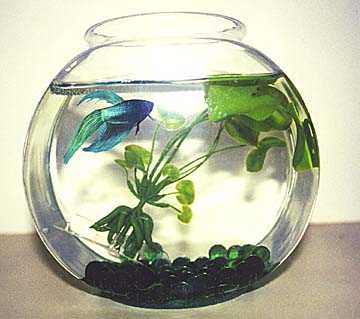bettasngoldfish
Maria
I am not familiar with mud koi ponds.

Another extreme example of the complete non-necessity of water changes would be poultry/fish aquaculture.
No water changes here-
http://www.fao.org/docrep/005/Y1187E/y1187e15.htm

What about this? (Copied from your link)
6. Oxygen depletion
- When water becomes deep green due to plankton blooms, oxygen in the water may get depleted and fish may die. In such cases, put mats or plastic sheets below the poultry house to catch the chicken excreta and suspend nutrient inputs for 1 to 3 weeks. If possible, immediately irrigate the pond with freshwater.

We have had folks on this forum set up a storage tote and call it a pond.
I can't wrap my head around not changing water as part of routine maintenance.


take a 5 gallon bucket and time how long it takes to fill it twice, that's how long it takes 10 gallons to flow through your hose. Now time how long it takes to refill your pond; now divide the pond fill time by the 10 gallon time and multiply by ten. It's not perfect but it's close enoug fot ponds.About once a week or so. I don't know exactly how much is pumped out. I back wash it using a 2000 gph pump for about 3-4 minutes and it takes about 12 minutes to refill the pond. Do you know how to calculate the amount pumped out?

Why were you nervous, out of curiosity. You do water changes, you believe they've improved the health or at least the appearance of your fish, but something about it worries you?

Just as we measure a ponds capacity in inches of fish there should be a similar equation of an agreed upon marginal plant in inches or feet per fish inch for a closed system. Are there any examples of tropical fish stores filtering their tanks by piping water into and out off a bog filter?
Just as we measure a ponds capacity in inches of fish there should be a similar equation of an agreed upon marginal plant in inches or feet per fish inch for a closed system. Are there any examples of tropical fish stores filtering their tanks by piping water into and out off a bog filter?
And no mention of water changes.

Well they do mention this:
A mud pond will still need a freshening up periodically. This can involve draining (usually in the winter), liming (to neutralize parasites, raise pH and calcium content, boost microbial growth, carbon dioxide removal), re-tilling the bottom, regrading and perhaps even fertilizing.
If you periodically drain it then you have to refill it. Sounds like a water change to me.
I wonder where the concept of water changes came from?
I imagine that water changes were seen as an early form of maintaining water quality.
.
Can you please give us an example of a properly done water change?
Mitch you are absolutely correct, but the practice is still very common today.A 100% water change is not stressful to fish?

I take it that the anti water change crowd in this forum have never kept Goldfish or Bettas in this way before???
Want to reply to this thread or ask your own question?
You'll need to choose a username for the site, which only take a couple of moments. After that, you can post your question and our members will help you out.
